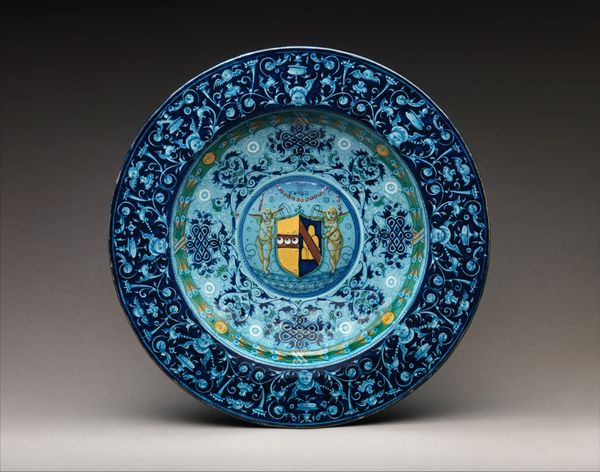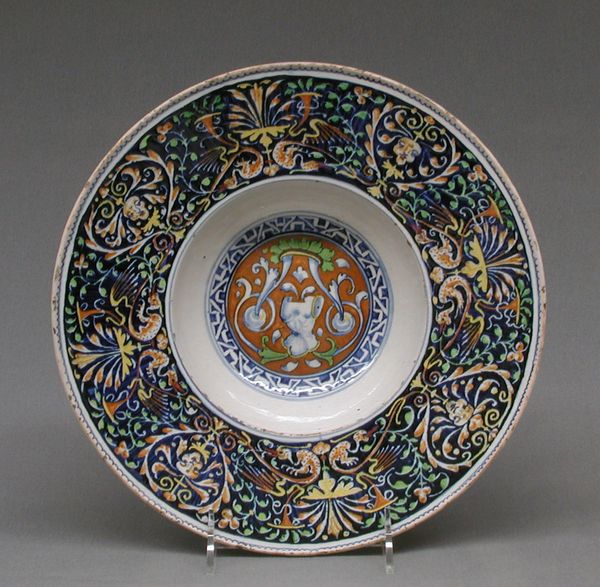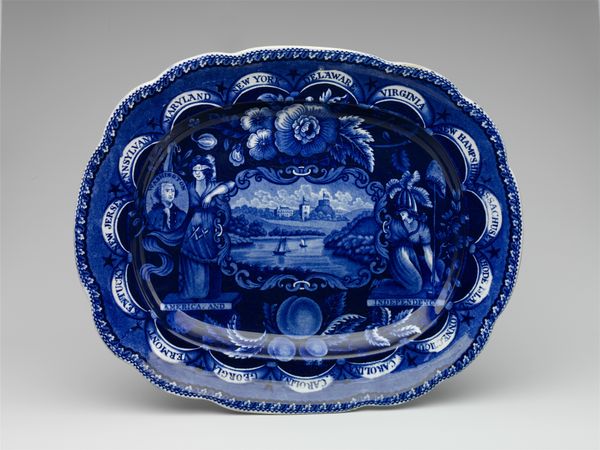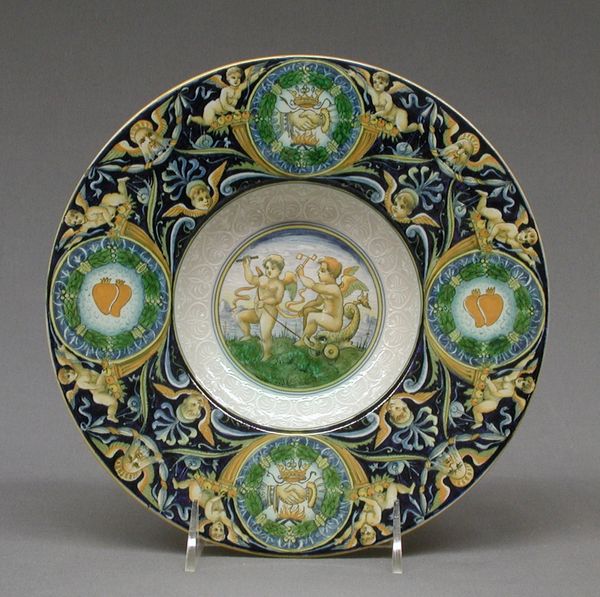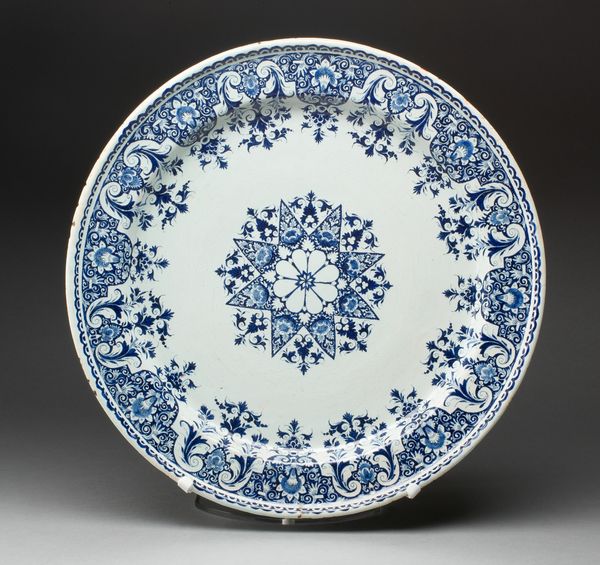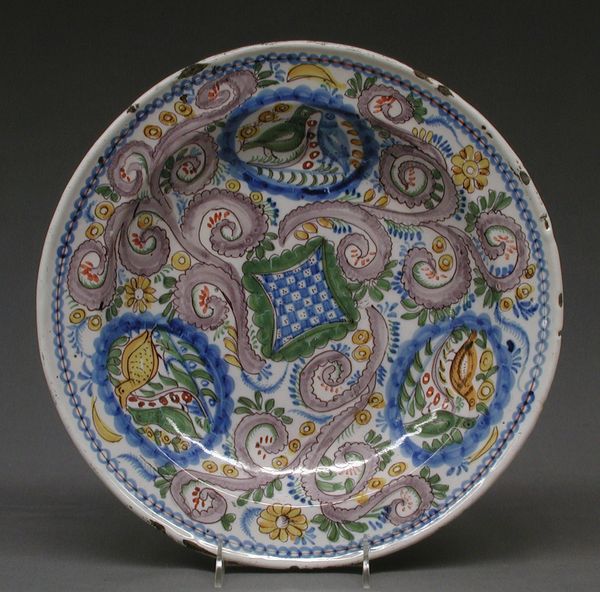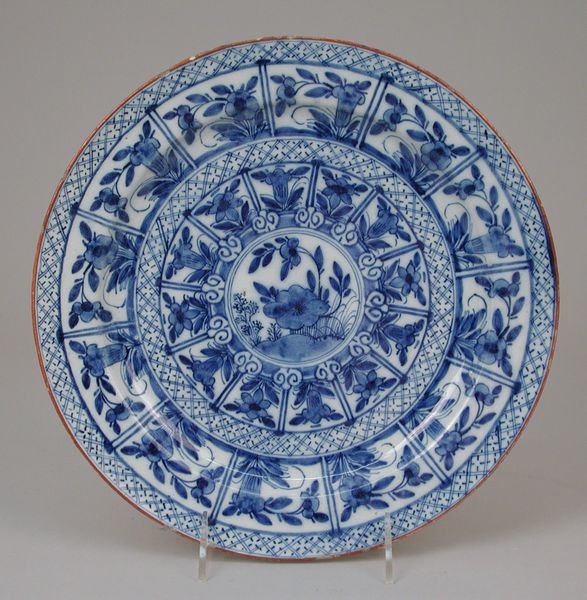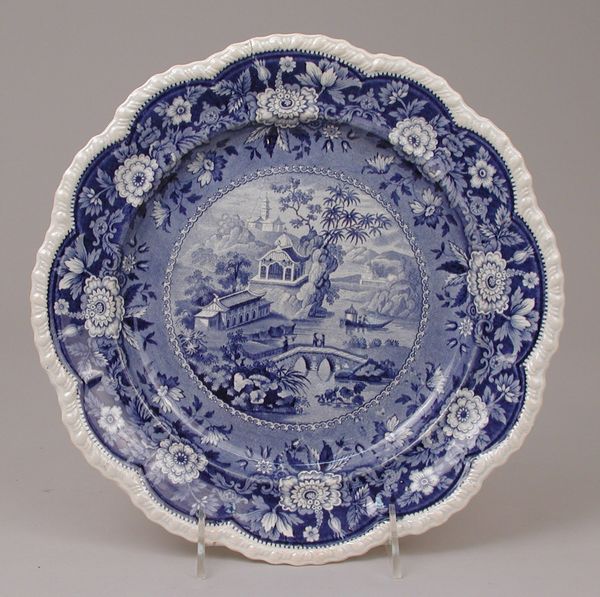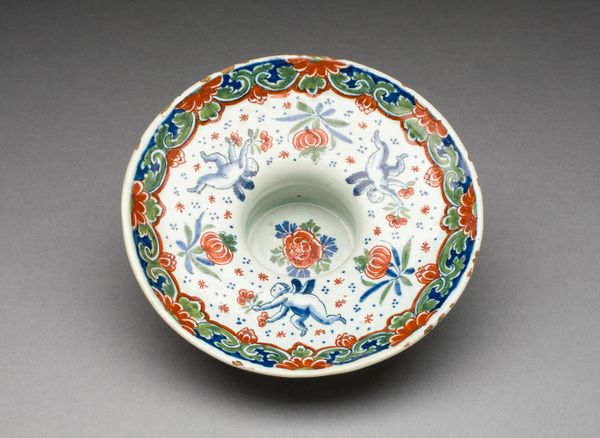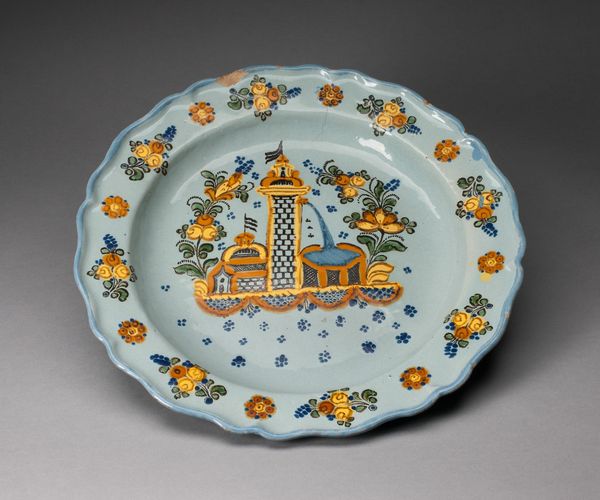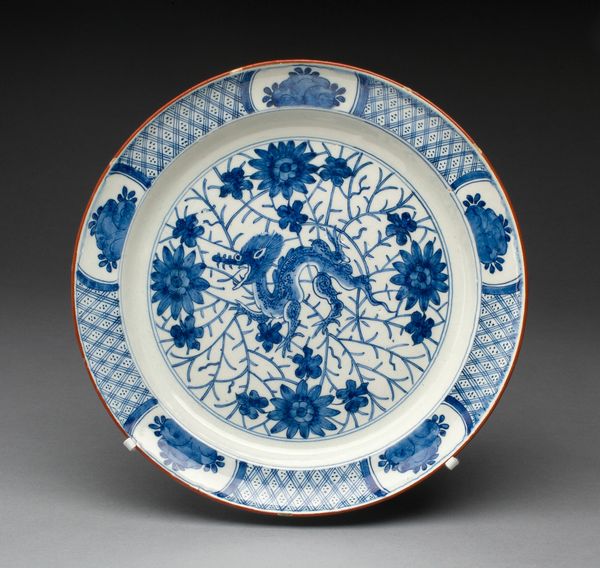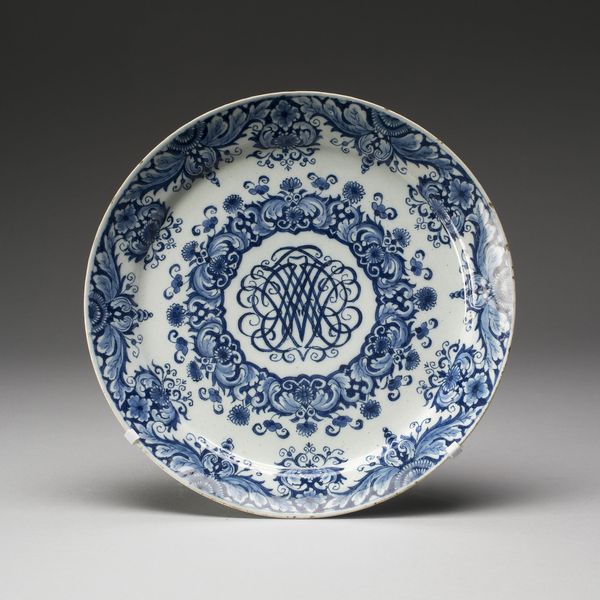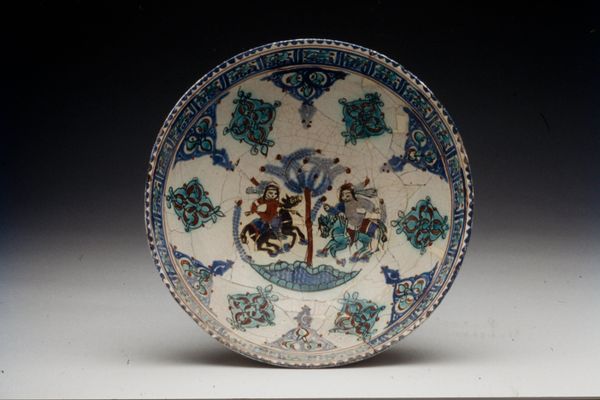
ceramic, sculpture
#
decorative element
#
ceramic
#
11_renaissance
#
sculpture
#
ceramic
#
decorative-art
#
italian-renaissance
#
decorative art
Dimensions: Overall (confirmed): 1 1/2 × 11 1/8 in. (3.8 × 28.3 cm)
Copyright: Public Domain
Curator: I'd like to introduce you to a ceramic plate, crafted sometime between 1520 and 1599 by the Casa Pirota Manufactory. It currently resides at the Metropolitan Museum of Art. Editor: It's overwhelmingly blue, isn’t it? Almost hypnotic with its dense, swirling decoration. There is something unsettling in how meticulously detailed it is—giving it the air of being made in obsession. Curator: The density you're observing is a key feature. The decoration reflects the taste of Renaissance Italy for elaborate ornamentation. This wasn't just decorative; owning objects like this signified wealth and social standing. The central coat of arms undoubtedly tells a story about lineage and power. Who were they trying to impress and why? Editor: I see a heraldic shield in the middle surrounded by concentric bands—there's definitely some sort of symbolism at play here, and it might even act as the plate’s focal point! Though my eye can’t help but move between each little decorative mask around the rim. Curator: Precisely! Consider how access to visual information was severely limited back then. This plate becomes a concentrated source of imagery—mythological figures, grotesque masks—circulating ideas and cultural references amongst its owners and viewers. What narrative power was held within these aristocratic families who held it, particularly during such widespread religious tension, reformation, inquisition? Editor: From a design perspective, the circular format is interesting. The artist clearly used a radial approach—radiating visual harmony by dividing space. The decoration really enhances the object’s shape! Curator: I find it fascinating how an everyday object was imbued with so much significance. Beyond the obvious aesthetic considerations, this plate can unlock discussions about trade, class, power, and even individual identity in a period of significant social transformation. What power structures were being enforced by means of decoration and ownership of goods? Editor: Indeed, and focusing solely on its aesthetic properties provides another lens. To consider the artistic mastery in how balance and harmony were rendered gives us more insight to that particular artist's perspective. Thank you for that broader view, this piece provides an intriguing interplay.
Comments
No comments
Be the first to comment and join the conversation on the ultimate creative platform.
